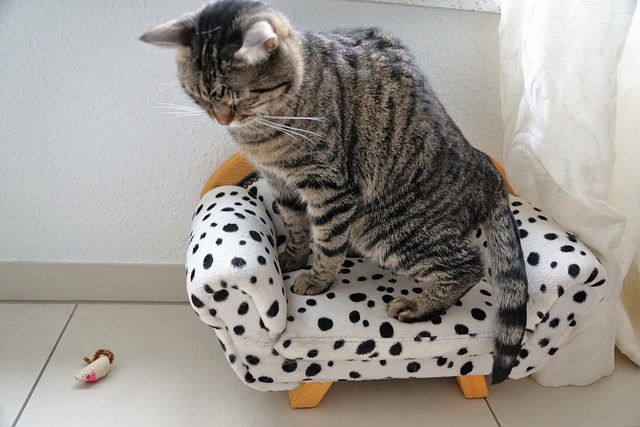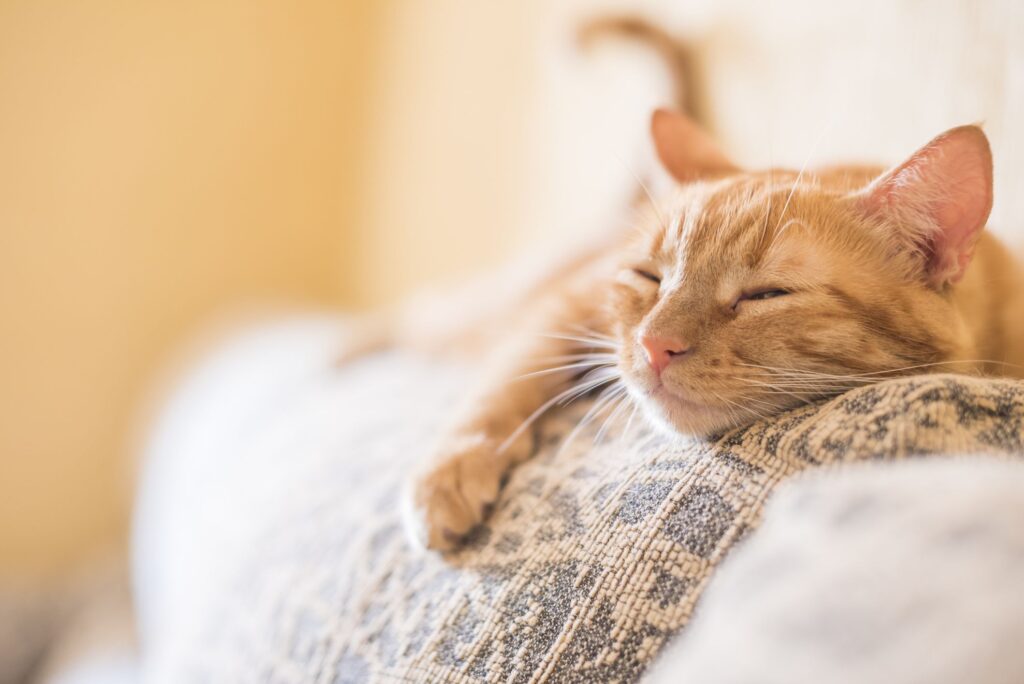Losing a beloved feline companion is a difficult experience, and in some situations, you might find yourself wondering about the time since your cat’s passing.
Through Rigor mortis you can identify the dead time of a cat. However, It is a tool that science has developed to help solve riddles like this one. You may determine the time by applying the procedure. To pinpoint the time of death more precisely, consider factors like body temperature, livor mortis (blood pooling in the lower body), and decomposition stage. Warmer surroundings can speed up rigor mortis, while colder ones slow it down. For a comprehensive assessment, consulting professionals is advisable.
While this might not be an easy topic to discuss, understanding how to estimate the time since a cat’s passing can offer a sense of closure and help with necessary arrangements.
In this guide, you will explore the rigor martis technique to solve the mystery. Remember that during this challenging time, seeking guidance from a veterinarian or a professional can provide the support you need.
What is rigor mortis?

There are several bodily functions that occur when a living being (of any species) dies. Its blood coagulates (clots) since its veins are no longer being pumped with blood, eventually drying up altogether. Besides, the creature’s muscles tense and stiffen as the blood dries. It is called Rigor Mortis. It makes the body stiff, thus the colloquial term for corpses.
Further, Depending on the person’s health prior to death and the cause of death, the Rigor Mortis process in humans can take several hours to complete. The process usually proceeds more quickly in smaller animals since there is less blood to dry up.
Also, Within an hour, a cat’s body is typically as rigid as a board. Moreover, It will be possible to determine how long the cat has been deceased based on the rigidity. If the cat hasn’t been dead long enough for rigor mortis to set in, you can determine when it passed away by looking at its body temperature. A body of this size can continue to feel heated for about 30 to 45 minutes.
How Does Rigor Mortis Determine the Time Of Death In Cats?
First, Initiating within 1 to 6 hours post-mortem, this process commences in smaller muscles like those in the face, progressively advancing to larger body muscles. When discovering a deceased cat during this initial phase, it implies that the demise occurred within the preceding few hours.
The pinnacle of stiffness materializes roughly between 12 to 24 hours after death, rendering the cat’s entire body rigid. Should a lifeless cat exhibit full-body rigor mortis, it’s reasonable to deduce the passing transpired approximately within a half day to a complete day prior.
Subsequently, between 48 to 72 hours post-mortem, the rigidity commences subsiding, originating once again in the smaller muscles and extending to the larger ones. A body regaining flaccidity, particularly within the smaller muscles, signifies a likelihood of the cat’s demise surpassing two days.
Other consideration:
Body Temperature: Monitoring the cat’s body temperature can provide valuable insights into the time since its passing. Generally, after death, the body undergoes cooling at an average rate of about 1 to 1.5 degrees Fahrenheit (0.55 to 0.83 degrees Celsius) per hour. By comparing the cat’s body temperature to the ambient temperature of its surroundings, you can derive an estimate of how long the cat has been deceased.
Decomposition Stages: As the body undergoes decomposition, distinct stages become apparent. Skin color changes, including a paling or bluish tint, are among the first signs. Additionally, bloating and the presence of insects can further indicate the progression of decomposition.
Livor Mortis: Livor mortis, also known as lividity, is the settling of blood in the lower parts of the body due to gravity. This can provide insights into the cat’s position after death. The livor mortis pattern is usually noticeable around 2 to 4 hours after death and becomes fixed around 8 to 12 hours after death.
Professional help: For a more precise estimation, seeking guidance from professionals with expertise in forensic science, veterinary medicine, or related fields is advisable. https://allaboutpurrs.com/
What are the Stages Of Rigor Mortis In Cats?
Autolysis: Following death, the body initiates autolysis, involving cell and tissue breakdown caused by the release of digestive enzymes. This phase begins shortly after passing and persists for several hours. Although external changes might not be evident, internal degradation processes are underway.
Bloat: As autolysis advances, internal bacteria multiply, generating gases that lead to bloating. This stage typically emerges within 24 to 48 hours after death. Gases accumulate, causing abdominal distension and altering the body’s appearance.
Active Decay: This stage, occurring a few days post-mortem, is characterized by swift tissue decomposition and the emission of foul odors. Fluids seep, tissues deteriorate, and the body transforms visibly. The scent intensifies, and the body’s aspect changes significantly.
Skeletonization: In the concluding phase, all soft tissues break down, leaving solely bones and hair. Depending on environmental conditions and other factors, this progression spans weeks to months. Ultimately, the body transforms into skeletal remnants.
Why Does Rigor Mortis Occur In Cats? (The Science Behind Rigor Mortis)
Rigor mortis occurs in cats due to a natural biological process that follows death. This process involves the tightening of muscles, making them stiff and difficult to move. The science behind rigor mortis is linked to the depletion of ATP, a molecule that provides energy for muscle contractions.
In addition, When a cat dies, ATP production stops, causing calcium ions to accumulate in muscle fibers. As a result, muscles contract and remain contracted, causing the stiffening characteristic of rigor mortis. This process unfolds in a predictable sequence, from initial muscle groups to the entire body, providing a timeline that can offer insights into the time of death.
Rigor Mortis Set In Time And How Long It Lasts In Cats?
Rigor mortis sets in a cat’s body shortly after death. It begins around 1 to 6 hours after passing, starting with smaller muscles and progressing to larger ones. This stiffening process peaks at about 12 to 24 hours after death, rendering the entire body rigid.
Following this peak, gradually recedes, typically starting around 48 to 72 hours after death. It dissipates in the reverse order, beginning in smaller muscles and spreading to larger ones. Lastly, The entire duration of rigor mortis can vary depending on factors like temperature and the cat’s size, but it generally lasts for a few days to around two days.
How Long Does a Dead Cat Stay Warm?
After a cat’s death, the body will remain warm for a variable period. The duration depends on factors such as the ambient temperature, the cat’s size, and the insulation provided by its fur. In general, a cat’s body temperature will gradually decrease to match the surrounding environment over a span of a few hours.
However, it’s important to note that the warmth will dissipate relatively quickly, and the body will eventually reach room temperature. In standard room conditions, the body, initially at approximately 101.5°F (38.6°C), gradually cools to align with the room temperature. This cooling process generally spans about 40 minutes to an hour.
What Are the Signs That a Cat Is Dead?

Absence of Vital Signs: Indicating a lack of heartbeat and breathing, these critical signs can be checked by placing your ear near the cat’s chest. Detecting a cat’s heartbeat, which is generally rapid and faint, might be challenging for someone without training.
Similarly, cats usually breathe rapidly and shallowly. If neither is detectable, it’s an indication that the cat might no longer be alive.
Unresponsive to Touch or Noise: Living cats typically react to touch and sounds. If the cat remains still and does not respond to loud noises, particularly those associated with food, it might be suggestive of death.
Lack of Blink Reflex: Gently touching or lightly blowing on the cat’s eye can reveal its blink reflex. The absence of a blink could signify that the cat has passed away. This should be approached with care and respect.
Body Temperature Drop: Following death, the cat’s body temperature begins to decrease, and its skin feels cold to the touch. Ordinarily, a cat’s body temperature is higher than that of humans, ranging from 100.5 to 102.5 degrees Fahrenheit.
Fixed, Dilated Pupils: In death, a cat’s eyes remain open, and its pupils dilate. Moreover, the eyes don’t respond to changes in light. This provides an indication that the cat is no longer alive.
Rigor Mortis: Rigor mortis, the body’s stiffness post-death, generally develops within 3-4 hours after passing. Environmental factors can influence this process, making it a less precise indicator of death.
Lividity or Livor Mortis: This involves blood pooling in the lower body regions due to gravity. It results in purplish-red discoloration at the lowest points, emerging within 30 minutes to 2 hours after death and becoming prominent in 6-12 hours.
Signs of Decomposition: Decomposition can initiate shortly after death, often accompanied by a strong, unpleasant odor. Changes in body color and bloating from gas accumulation may also become evident.
Did My Cat Pass Away Peacefully?
Cats, similar to other animals, possess adeptness in concealing discomfort. Nevertheless, specific indicators can offer clues to a tranquil passing. If your cat’s demise occurred during slumber or displayed an air of relaxation, it could signify a peaceful transition.
Besides, This tranquility can also be shown by the absence of obvious struggle or disquiet, as seen by the lack of frantic motions, the absence of obvious physical harm, and a collected facial expression.
Worth noting is that cats can enter a state known as ‘purring sleep’ as they approach life’s end, characterized by tranquility and calmness. However, every cat’s journey is distinct, and certainty remains elusive.
If your cat passed away suddenly or when you were absent, consulting a veterinarian might yield insights via post-mortem observations. Nevertheless, directing your attention toward the affection and care you showered upon them throughout their life remains paramount.
How Long Does a Dead Cat Take to Start Emitting Odor?
The time frame for a deceased cat to begin emitting an odor can vary due to several factors. Typically, the decomposition process starts relatively swiftly after death, potentially leading to odor becoming noticeable within hours to a day, especially in warmer conditions. Nevertheless, the exact timing hinges on aspects like the cat’s size, environmental temperature, humidity, and bacterial presence.
In colder surroundings, the emergence of odor might be delayed, whereas in warmer settings, it could occur more rapidly. Moreover, considerations such as the cat’s location and whether it’s indoors or outdoors can impact how quickly the odor becomes detectable.
Lastly, It’s essential to be aware that the smell of decomposition can be strong and unpleasant. If a robust odor connected to a deceased cat is detected, it’s advisable to take appropriate measures for the respectful management and disposal of the remains.
What to do a Cat That Is Sick or Near Death?
Performing CPR on your cat can be crucial if it has ceased breathing or its heart has stopped beating. CPR entails rescue breaths, chest compressions, and abdominal thrusts to revive your cat.
However, it’s important to note that while successful CPR can save your pet, it may also lead to injuries. Once revived, seeking immediate veterinary attention remains vital, as the underlying cause could recur. It’s wise to have someone contact the vet while you administer CPR.
Remember, do not administer chest compressions if your cat still has a pulse. Instead, promptly transport your ailing cat to the vet if you suspect illness or distress. Maintaining warmth is essential; encompass your cat in warm blankets or clothing within a box or carrier, particularly for kittens needing regulated body temperature.
While wrapping your cat, ensure its head isn’t covered, and avoid excessive tightness. Your cat’s well-being is paramount, and timely professional intervention offers the best chance of recovery.
FAQ
Can I use the “smell test” to determine how long my cat has been dead? No, relying solely on odor for the time of death might not be accurate. Odor development varies due to temperature and environment. Using multiple indicators like rigor mortis and body temperature changes is more reliable.
Can technology like forensic tools help determine a cat’s time of death? Yes, advanced forensic tools such as entomology and forensic pathology can provide more precise estimations. Insects’ presence on the body and internal organ changes offer insights, especially in legal cases or research.
Can a cat’s breed affect how quickly rigor mortis sets in?
Yes, a cat’s breed can influence rigor mortis onset due to body composition and muscle density variations. Small-breed cats might experience rigor mortis earlier, but environment and temperature still matter.
Can a cat’s last meal affect how quickly decomposition occurs?
Yes, a cat’s last meal can influence decomposition. A recent meal might lead to faster bacterial growth, expediting the process. However, temperature and environment remain significant.
Can I rely solely on rigor mortis to determine the time of death?
No, while rigor mortis is valuable, it’s best used alongside other signs like body temperature changes, livor mortis, and decomposition stages. External factors like temperature and size can influence rigor mortis, so a comprehensive evaluation is recommended.
Conclusion
In brief, determining the time since a cat’s passing involves a meticulous observation of various factors and signs. Indicators, changes in body temperature, and the degree of decomposition all work together to estimate how long someone has been dead. Rigor mortis is only one piece of the puzzle.
On top of that, when in doubt, speaking with a veterinarian or other qualified expert might offer more detailed information. Understanding these elements can help with the process of coming to terms with the loss of a cherished feline companion and enable pet owners to pay tribute to their cat’s memories with kindness and care.

